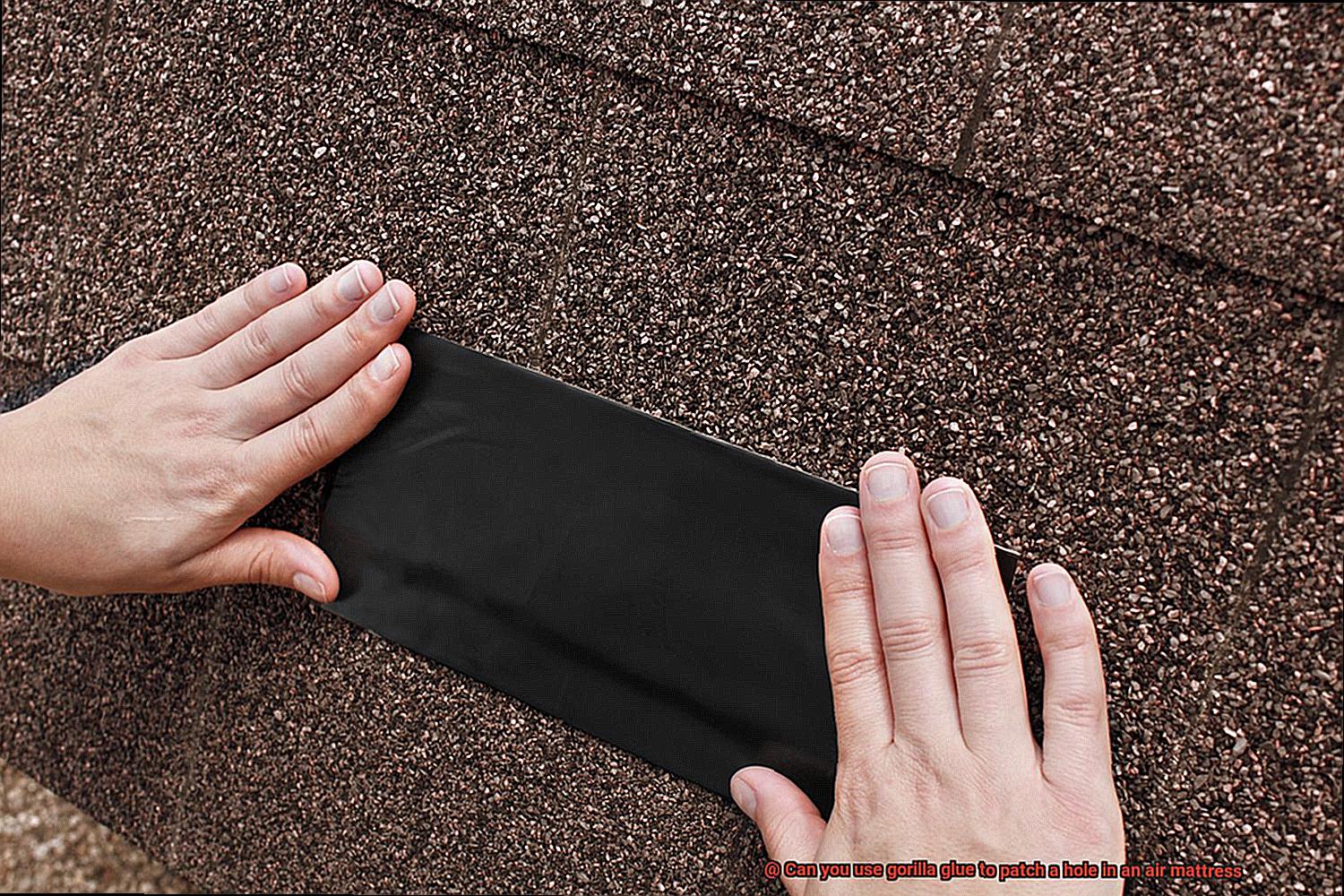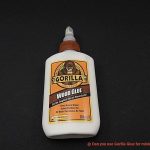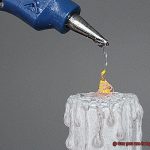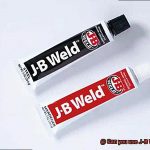Today, we’re tackling a question that might just save your next camping trip or unexpected guest situation. Imagine this: you’re all set for a cozy night’s sleep on your trusty air mattress, but oh no.
A sneaky hole threatens to ruin your comfort. Don’t panic, my friend, because we’ve got a potential solution – gorilla glue.
In this post, we’ll explore whether this powerful adhesive can patch up your deflating mattress. So grab a chair and get ready to discover the ins and outs of using this DIY trick for air mattress repairs.
Let’s dive right in.
What is Gorilla Glue?
Contents
- 1 What is Gorilla Glue?
- 2 Why Gorilla Glue May Not Be Suitable for Patching Air Mattresses
- 3 The Expansion of Gorilla Glue
- 4 Flexibility and Durability of Gorilla Glue
- 5 Moisture-Activated Curing Process of Gorilla Glue
- 6 Alternative Solutions for Repairing Air Mattresses
- 7 Repair Kits for Inflatable Items
- 8 Adhesives Specifically Designed for Inflatable Items
- 9 Conclusion
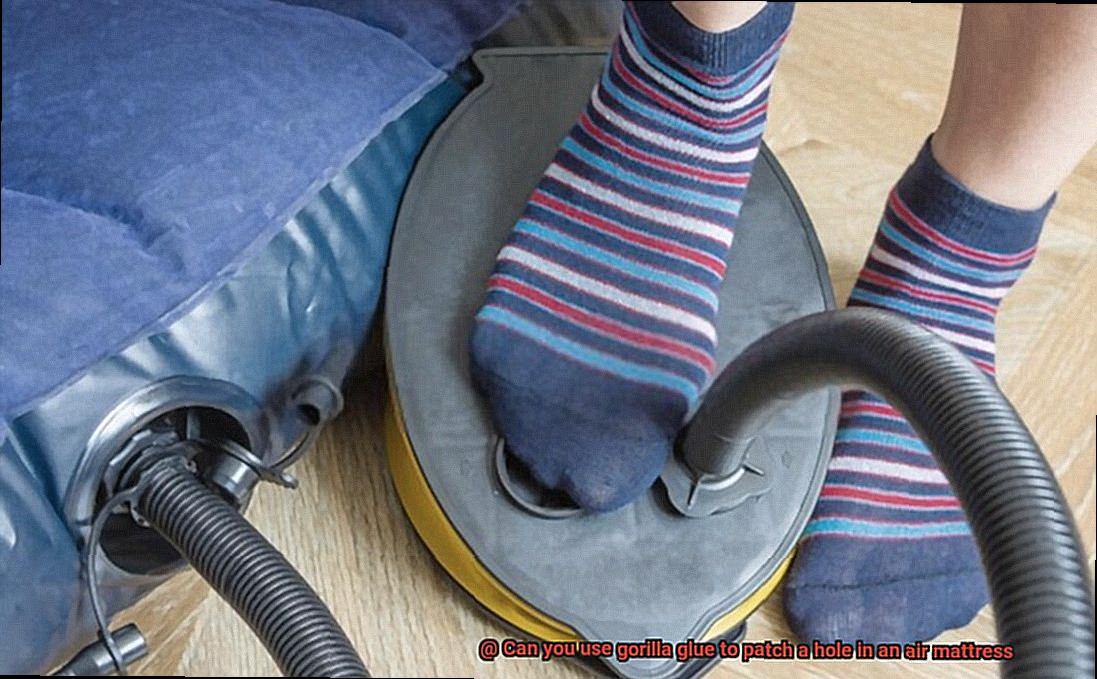
This polyurethane-based adhesive has become a staple in many toolboxes, trusted by DIY enthusiasts, professionals, and craftsmen alike. In this blog post, we will delve into the properties of Gorilla Glue, its various forms, and why it has garnered a reputation as a powerful adhesive.
Properties of Gorilla Glue:
Gorilla Glue derives its name from its unparalleled strength and durability. It is designed to bond a wide array of materials, including wood, metal, fabric, ceramics, and more. This adhesive truly lives up to its namesake – its strength is as mighty as a gorilla.
One unique feature of Gorilla Glue is its ability to expand upon contact with moisture. This expansion allows the glue to penetrate deep into the material’s pores, creating a bond that is not only strong but also long-lasting. However, it is important to use Gorilla Glue correctly to avoid excessive expansion and potential messy residue.
Forms of Gorilla Glue:
Gorilla Glue is available in different forms to cater to diverse bonding needs. The liquid glue is perfect for porous surfaces such as wood and fabric. For those seeking more control over application or working on vertical surfaces, the gel glue provides the ideal solution. Additionally, Gorilla Glue offers tape form adhesive for quick and mess-free bonding.
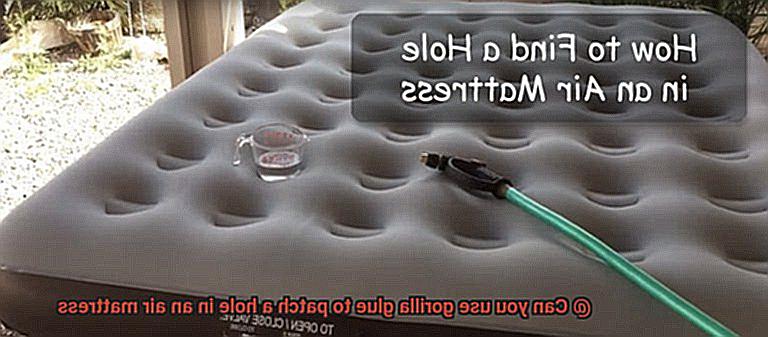
Water Resistance:
Once fully cured, Gorilla Glue exhibits excellent water resistance. This characteristic makes it suitable for both indoor and outdoor applications. Whether you are working on a project inside your home or tackling an outdoor repair, you can trust that Gorilla Glue will hold up even in humid or wet conditions.
Why Gorilla Glue May Not Be Suitable for Patching Air Mattresses
When it comes to fixing things, Gorilla Glue is often the go-to adhesive for its strength and versatility. However, not all surfaces are created equal, and air mattresses present a unique challenge.
In this blog post, we’ll dive into why Gorilla Glue may not be suitable for patching air mattresses, exploring its curing process, compatibility with mattress materials, moisture activation requirements, and alternative options.
Curing Process:
Gorilla Glue’s expanding foam-like structure during the curing process is a double-edged sword. While it’s great for bonding materials, it poses a problem when used on air mattresses. Air mattresses require a smooth and airtight patch to maintain proper inflation and support. The foaming action of Gorilla Glue can create bumps or uneven surfaces, making it uncomfortable to lie on and potentially causing further damage.
Compatibility with Mattress Materials:
Most air mattresses are made from PVC or vinyl, which can be tricky to bond successfully. Gorilla Glue isn’t specifically designed for PVC or vinyl repairs, meaning its effectiveness may vary depending on the specific formulation of the glue and the material of the mattress. Using an adhesive that’s specifically formulated for inflatable products, like a vinyl repair kit, ensures better compatibility and a strong, flexible bond.
Moisture Activation:
Gorilla Glue requires moisture to activate and cure properly. This means you may need to wet the area around the hole before applying the glue to your air mattress. Introducing moisture to an already vulnerable environment can lead to mold or mildew growth if not dried thoroughly. It’s crucial to consider the potential consequences before taking such risks.
Alternative Options:
Instead of relying on Gorilla Glue, consider using a vinyl repair kit designed specifically for inflatable products. These kits usually come with adhesive patches that are flexible, airtight, and compatible with air mattress materials. They provide a strong bond without interfering with the mattress’s functionality.
The Expansion of Gorilla Glue
In 1999, a game-changer hit the adhesive market, and little did anyone know it would become a household name. Gorilla Glue, with its incredible strength and versatility, has since expanded its empire, solidifying its position as the go-to choice for DIY enthusiasts, craftsmen, and professionals alike.
The secret behind Gorilla Glue’s success lies in its revolutionary polyurethane formula. Unlike traditional glues, this extraordinary adhesive expands and fills gaps as it dries. Say goodbye to uneven surfaces and porous materials that refuse to bond – Gorilla Glue effortlessly tackles them all. Its unique expansion property sets it apart from the competition, delivering unrivaled strength and durability.
But that’s not all. Over the years, Gorilla Glue has expanded its product line to cater to every need and project. Liquid, gel, tape – you name it, they have it. This diverse range allows users to choose the most suitable option for their specific task. Whether you’re repairing a broken chair or creating a masterpiece in your workshop, Gorilla Glue has got you covered.
And the expansion doesn’t stop there. Recognizing the demand for specialized formulas, Gorilla Glue now offers wood glue, epoxy, and super glue in its arsenal. These tailored products address specific requirements, whether it’s bonding wood or providing rapid adhesion for quick fixes. No matter what your project calls for, Gorilla Glue has the perfect solution.
But what makes Gorilla Glue truly exceptional is its performance in challenging environments. This adhesive is waterproof and resistant to temperature changes, making it ideal for both indoor and outdoor applications. It withstands the elements with ease, ensuring that your repairs and creations stand the test of time.
Reliability and durability are at the core of Gorilla Glue’s reputation. From fixing broken ceramics to constructing intricate models, this adhesive has become a staple in the toolbox of professionals and DIY enthusiasts alike.
Flexibility and Durability of Gorilla Glue
When it comes to fixing air mattresses, flexibility and durability are crucial factors to consider. Thankfully, Gorilla Glue swoops in like a superhero to save the day. Let’s explore why Gorilla Glue is the perfect choice for patching up those pesky holes in your air mattress.
First and foremost, Gorilla Glue is renowned for its exceptional flexibility. This means that the glue can withstand movement without compromising the bond. So even if you toss and turn throughout the night, rest assured that the patch will remain intact. No more waking up on a deflated mattress.
But flexibility isn’t the only superpower Gorilla Glue possesses – its durability is equally impressive. Designed to resist pressure and movement, this glue forms a strong and long-lasting bond that can handle the stress of being sat on or slept on without easily cracking or breaking. Say goodbye to constant repairs.
What sets Gorilla Glue apart from other adhesives is its expanding formula. As it dries, it expands to fill any gaps or irregularities in the surface, creating a flawless repair. This expansion reinforces the bond and prevents further damage or leaks from occurring. It’s like having an invisible shield protecting your air mattress.
Let’s not forget about water-resistance. Once fully cured, Gorilla Glue becomes impervious to water, making it ideal for patching holes in air mattresses that may be exposed to moisture or liquids. So whether you spill your morning coffee or accidentally knock over a glass of water, your repaired air mattress will remain intact.
Not only does Gorilla Glue excel in flexibility and durability, but it also withstands extreme temperatures without losing its adhesive properties or becoming brittle. No matter the season or climate, your repaired air mattress will remain strong and reliable.
However, it’s important to note that Gorilla Glue does have limitations. If your air mattress has extensive damage, it may be best to seek professional repair services or consider replacing the mattress entirely. But for smaller holes and tears, Gorilla Glue is your go-to adhesive.
Moisture-Activated Curing Process of Gorilla Glue
Imagine the frustration of discovering a leak in your air mattress just as you’re about to settle in for a peaceful night’s sleep. But fear not. The solution lies in the remarkable adhesive known as Gorilla Glue. With its moisture-activated curing process, this adhesive works like magic to patch up holes and keep your air mattress intact.
The Science Behind the Power
Gorilla Glue’s superpower lies in its chemistry. When this adhesive comes into contact with moisture, it undergoes a fascinating chemical reaction that causes it to expand and harden. This unique characteristic enables Gorilla Glue to create an incredibly strong and durable bond on various surfaces, including air mattresses.
Unleashing the Power of Moisture
The moisture-activated curing process of Gorilla Glue begins the moment water enters the equation. Whether it’s from the ambient humidity or the surface you’re working on, moisture triggers a chain reaction within the glue molecules. This reaction forms cross-links between the molecules, resulting in a bond that can withstand a wide range of environmental conditions.
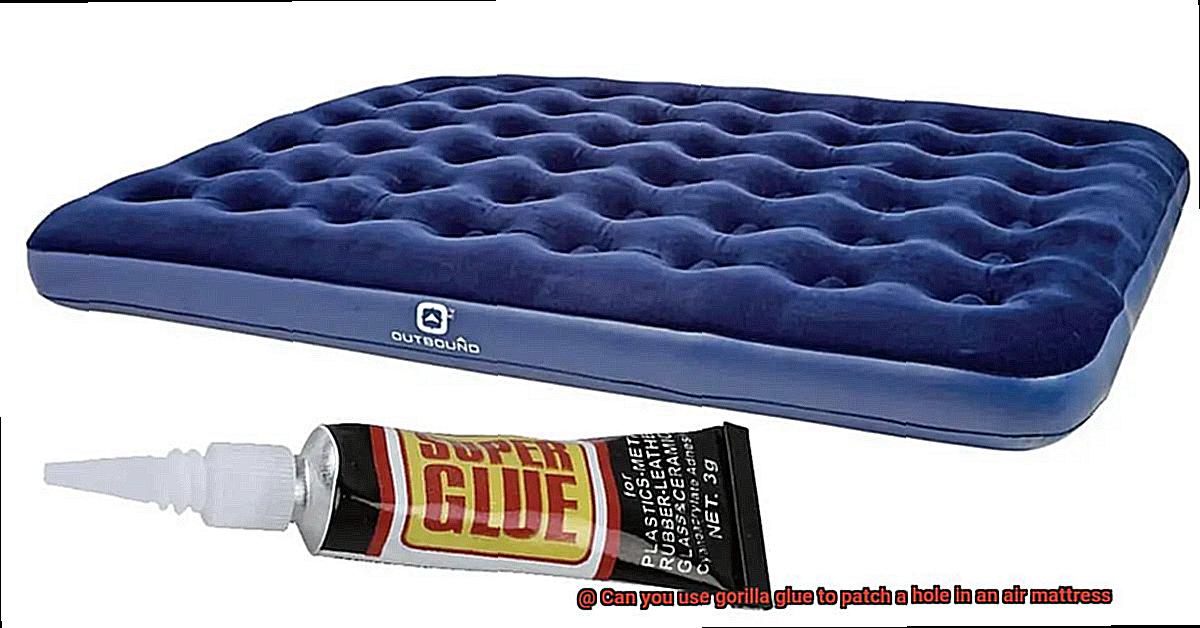
The Goldilocks Zone of Moisture
While moisture is essential for activating Gorilla Glue’s curing process, it’s important to strike the right balance. Too much water can actually hinder its effectiveness. To achieve optimal results, ensure that the surface you’re gluing is damp but not soaking wet.
Excessive water can dilute the glue, preventing it from fully expanding and hardening. So, before applying Gorilla Glue to patch that pesky hole in your air mattress, make sure to dry the surface first and then lightly moisten it.
Patience is Key
To unleash the full power of Gorilla Glue, patience is a virtue. The adhesive requires approximately 1-2 hours to partially cure and a full 24 hours to reach maximum strength. During this time, it’s crucial to avoid disturbing or moving the glued area. Allowing the glue to set undisturbed ensures that it forms a secure and durable bond.
Conclusion:
Gorilla Glue’s moisture-activated curing process is the secret weapon you need for patching holes in your air mattress. Its ability to expand and harden upon contact with moisture creates a bond that can withstand the test of time. Remember to prepare the surface properly, lightly moisten it, and give the glue ample time to work its magic. Rest easy, knowing that your air mattress is protected by Gorilla Glue’s invisible shield against leaks and damage.
Alternative Solutions for Repairing Air Mattresses
Don’t worry, because I’m here to share some alternative solutions for repairing your beloved inflatable bed. Let’s explore the world of adhesives and the pros and cons of using Gorilla Glue as a potential fix.
But wait. While Gorilla Glue may seem like a strong adhesive option, it may not be the best choice for patching a hole in an air mattress. This adhesive has a tendency to expand, creating a messy situation if not used correctly. Furthermore, it is not specifically designed for repairing inflatable items, limiting its effectiveness in this context.
So, what other options do we have? Let’s dive into some alternative solutions:
- Air Mattress Repair Kit: This tried-and-true method often comes equipped with durable and flexible patches specifically designed for air mattresses. The included adhesive is suitable for the job at hand.
- Vinyl Repair Kit: These kits are commonly used for fixing vinyl materials like pool inflatables, boat covers, and air mattresses. They typically contain adhesive and patches compatible with vinyl materials.
- Duct Tape: In a pinch, duct tape can serve as a temporary fix for small holes or leaks in your air mattress. However, keep in mind that it may not provide a long-lasting solution and can leave residue.
- Silicone Sealant or Waterproof Glue: If water-resistance is important to you, these adhesives are your best bet. They can withstand moisture and provide a strong bond when used correctly. Just ensure compatibility with your air mattress material.
- Inflatable Boat Repair Adhesive: Designed to bond with inflatable materials, this adhesive offers a reliable and long-lasting repair solution.
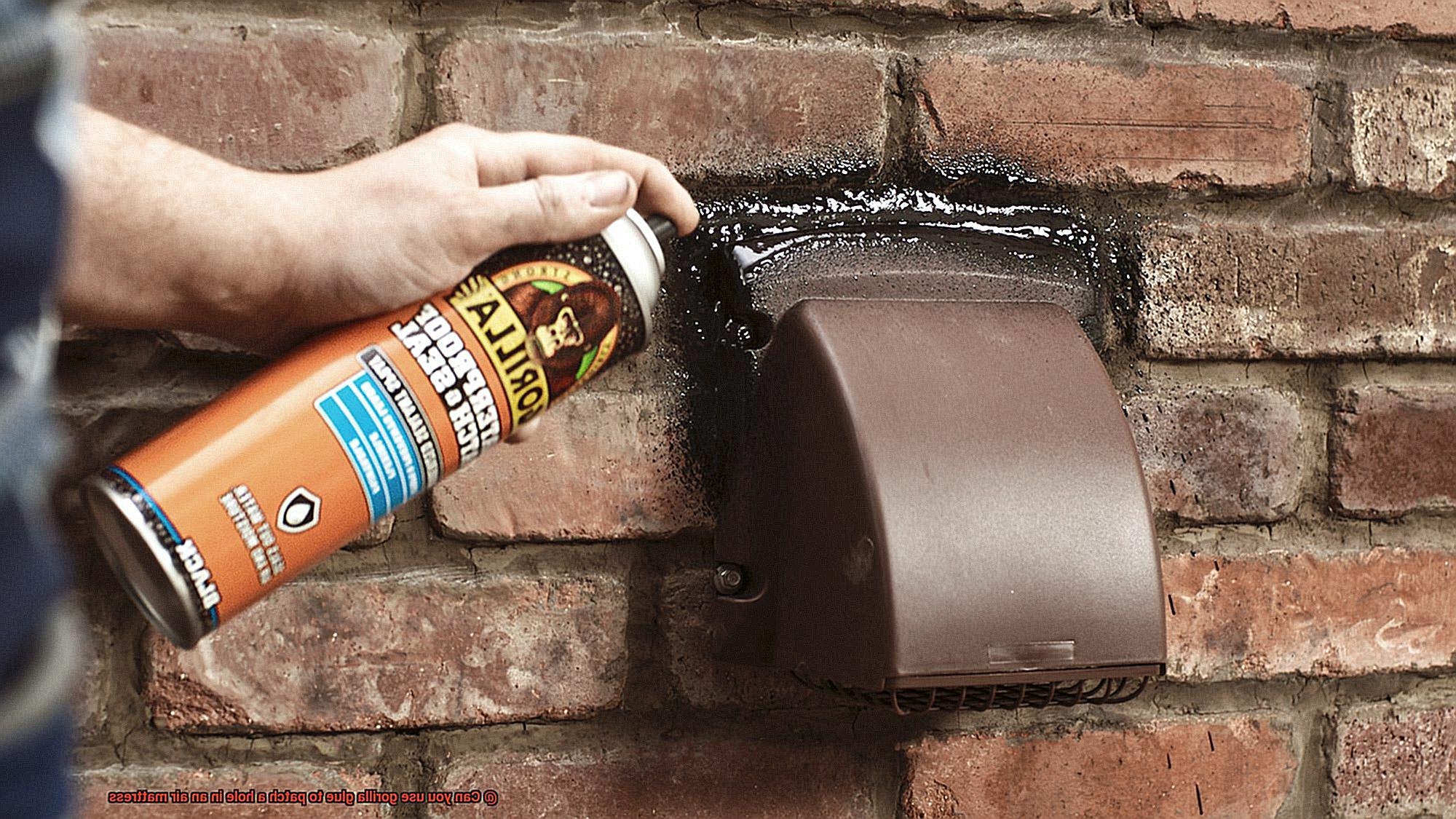
Remember, if you’re dealing with larger holes or tears, it may be time to consider replacing the entire mattress. Reach out to the manufacturer or explore purchasing options for a new air mattress.
Repair Kits for Inflatable Items
Whether it’s an air mattress that’s lost its air, a pool float with a pesky leak, or an inflatable boat that’s seen better days, fear not. Repair kits are readily available to come to your rescue. In this post, we’ll dive into the nitty-gritty of repairing inflatable items and explore the best practices for a successful restoration.
First things first, let’s talk tools. A repair kit is your trusty sidekick in this mission, equipped with all the essentials for saving your deflated friend. Typically, it contains a patching material and adhesive specifically designed for inflatable items. The patching material is crafted from durable and flexible materials like PVC or vinyl, ensuring it can withstand the pressure and movement of air inside the item.
Now that you’ve got your repair kit in hand, it’s time to get down to business. Start by giving the damaged area a thorough cleaning using a mild detergent or rubbing alcohol. This step ensures that any dirt, oil, or debris that could hinder the adhesive’s effectiveness is banished.
Next up, it’s time to unleash the adhesive magic. Apply a thin layer of the included adhesive onto the patching material. Be sure to spread it evenly, covering every nook and cranny of the patching material. Once you’re satisfied, press the patch firmly onto the damaged area of your inflatable item. The adhesive will work its wonders, creating a strong bond between the patching material and the surface for a repair that stands the test of time.
Now comes the waiting game – cue dramatic music. Allow ample time for the adhesive to dry and bond properly. Patience is key here, my friend. While it usually takes around 24 hours for the adhesive to work its magic, I recommend consulting the instructions included with your repair kit for specific drying times to ensure optimal results.
Once the adhesive has set, it’s time to put your repair skills to the test. Inflate your item and meticulously inspect it for any signs of leakage. If all looks shipshape, congratulations. Your repair job was a resounding success. However, if you catch any stubborn leaks still persisting, don’t fret. You may need to repeat the repair process or consider alternative methods to seal the deal.
Now, let’s address a common misconception. While Gorilla Glue may be a formidable adhesive for many repairs, it’s not necessarily your go-to choice for fixing holes in inflatable items. Its expansion properties can create uneven surfaces or unsightly bulges that impact both comfort and functionality. So, for the love of all things inflatable, stick with a repair kit specifically designed for these items.
Adhesives Specifically Designed for Inflatable Items
Adhesives specifically designed for inflatable items are the true champions when it comes to patching up beloved inflatables. Whether you’re tired of waking up on a deflated air mattress or have experienced the sinking disappointment of a punctured pool float, these specialized adhesives are here to save the day.
Let’s address the elephant in the room – Gorilla Glue. While it may be fantastic for many applications, when it comes to repairing inflatable items, it’s like bringing a sledgehammer to a delicate tea party. One of the main reasons Gorilla Glue falls short is its expansion properties. As it dries, it expands and creates a foam-like substance that can be hard to control. This expansion can lead to uneven surfaces and compromise the repair’s integrity. And let’s face it, when you’re trying to catch some Z’s on your air mattress, the last thing you want is an uncomfortable lumpy surface.
Flexibility is another key factor when repairing inflatables. Your air mattress goes through a lot – constant movement, pressure changes, and maybe even the occasional wrestling match with your dog. Adhesives specifically designed for inflatable items are made from materials like polyurethane or PVC that are known for their flexibility and compatibility with inflatable materials. They can withstand all the twists, turns, and jumps without losing their bond.
Choosing the right adhesive for your inflatable is crucial. Different types of inflatables may require different adhesives, so it’s important to read the manufacturer’s instructions or consult with a professional to ensure you’re using the correct adhesive for your specific item. A little research goes a long way in ensuring your repair is a success.
Before diving into your repair project, make sure to properly prepare the surface. Clean the area around the hole with a mild soap and water solution to remove any dirt or debris that could interfere with the bonding process. Once the surface is clean and dry, it’s time to apply the adhesive according to the manufacturer’s instructions.
When your air mattress starts to resemble a pancake or your pool float springs a leak, resist the temptation of using Gorilla Glue as a quick fix. Instead, reach for an adhesive specifically designed for inflatable items. Your inflatables will thank you as they rise from the depths of deflation and bring joy back into your outdoor adventures.
Gd7bhrKUaBE” >
Conclusion
In conclusion, using Gorilla Glue to patch a hole in an air mattress is not recommended. While Gorilla Glue is a strong adhesive that can bond various materials together, it is not designed for use on flexible surfaces like air mattresses. The glue’s rigid nature may cause the patched area to become stiff and prone to cracking or breaking under pressure.
Instead, it is advisable to use specific repair kits or patches that are specifically designed for air mattresses. These kits often include a flexible adhesive and patches made from durable materials that can withstand the strain of inflation and deflation.
By opting for the appropriate repair method, you can ensure a long-lasting fix for your air mattress without compromising its functionality or comfort. Remember, taking the time to properly repair your air mattress will save you from potential sleepless nights and the hassle of replacing it altogether.
So, next time you find yourself with a hole in your air mattress, skip the Gorilla Glue and opt for a reliable repair kit instead.

